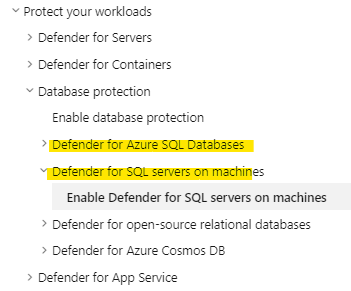Hi @Andreas Kreuzberg ,
You can check the first link i post which is for Azure-native SQL servers.
What is more, the navigation bar on the left side helps you to access more documents.

If you find it too much trouble to read those documents, please read this: https://github.com/MicrosoftDocs/azure-docs/blob/main/articles/defender-for-cloud/defender-for-sql-introduction.md
Or will the defender scan all database files, all extended event files and so on?
Threat intelligence enriched security alerts are triggered when there's:
Potential SQL injection attacks
- including vulnerabilities detected when applications generate a faulty SQL statement in the database
Anomalous database access and query patterns
- for example, an abnormally high number of failed sign-in attempts with different credentials (a brute force attempt)
Suspicious database activity
- for example, a legitimate user accessing an SQL Server from a breached computer which communicated with a crypto-mining C&C server
An advanced threat protection service continuously monitors your SQL servers for threats such as SQL injection, brute-force attacks, and privilege abuse. This service provides action-oriented security alerts in Microsoft Defender for Cloud with details of the suspicious activity, guidance on how to mitigate to the threats, and options for continuing your investigations with Microsoft Sentinel. Learn more about advanced threat protection.
Best regards,
Seeya




